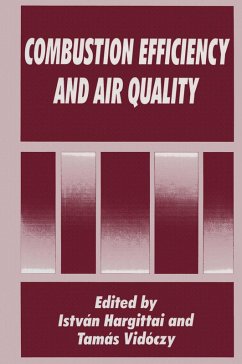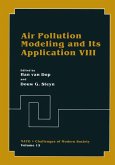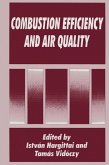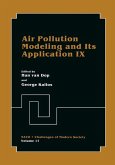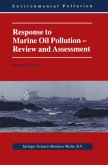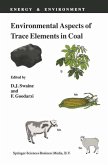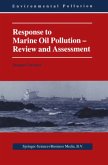Combustion Efficiency and Air Quality
Herausgegeben:Hargittai, István; Vidóczy, T.
Combustion Efficiency and Air Quality
Herausgegeben:Hargittai, István; Vidóczy, T.
- Broschiertes Buch
- Merkliste
- Auf die Merkliste
- Bewerten Bewerten
- Teilen
- Produkt teilen
- Produkterinnerung
- Produkterinnerung
In this timely volume, scientists examine examine the physical, structural, and analytical chemistry of fuel combustion. Their contributions also address the issue of combustion efficiency and how air quality can be protected or improved. Supported by numerous illustrations, this volume be appreciated by researchers and students working in various areas of chemistry.
Andere Kunden interessierten sich auch für
![Air Pollution Modeling and Its Application VIII Air Pollution Modeling and Its Application VIII]() H. Van Dop / Douw G. Steyn (Hgg.)Air Pollution Modeling and Its Application VIII166,99 €
H. Van Dop / Douw G. Steyn (Hgg.)Air Pollution Modeling and Its Application VIII166,99 €![Combustion Efficiency and Air Quality Combustion Efficiency and Air Quality]() Tamas VidoczyCombustion Efficiency and Air Quality59,99 €
Tamas VidoczyCombustion Efficiency and Air Quality59,99 €![Air Pollution Modeling and Its Application IX Air Pollution Modeling and Its Application IX]() H. Van Dop (ed.) / George KallosAir Pollution Modeling and Its Application IX166,99 €
H. Van Dop (ed.) / George KallosAir Pollution Modeling and Its Application IX166,99 €![Response to Marine Oil Pollution Response to Marine Oil Pollution]() Douglas CormackResponse to Marine Oil Pollution125,99 €
Douglas CormackResponse to Marine Oil Pollution125,99 €![Environmental Aspects of Trace Elements in Coal Environmental Aspects of Trace Elements in Coal]() Environmental Aspects of Trace Elements in Coal166,99 €
Environmental Aspects of Trace Elements in Coal166,99 €![Response to Marine Oil Pollution Response to Marine Oil Pollution]() Douglas CormackResponse to Marine Oil Pollution110,99 €
Douglas CormackResponse to Marine Oil Pollution110,99 €![Evaluating Climate Chanage Action Plans Evaluating Climate Chanage Action Plans]() Evaluating Climate Chanage Action Plans83,99 €
Evaluating Climate Chanage Action Plans83,99 €-
-
-
In this timely volume, scientists examine examine the physical, structural, and analytical chemistry of fuel combustion. Their contributions also address the issue of combustion efficiency and how air quality can be protected or improved. Supported by numerous illustrations, this volume be appreciated by researchers and students working in various areas of chemistry.
Produktdetails
- Produktdetails
- Verlag: Springer / Springer US / Springer, Berlin
- Artikelnr. des Verlages: 978-1-4613-5739-1
- Softcover reprint of the original 1st ed. 1995
- Seitenzahl: 308
- Erscheinungstermin: 24. Oktober 2012
- Englisch
- Abmessung: 229mm x 152mm x 17mm
- Gewicht: 449g
- ISBN-13: 9781461357391
- ISBN-10: 146135739X
- Artikelnr.: 37480412
- Herstellerkennzeichnung
- Books on Demand GmbH
- In de Tarpen 42
- 22848 Norderstedt
- info@bod.de
- 040 53433511
- Verlag: Springer / Springer US / Springer, Berlin
- Artikelnr. des Verlages: 978-1-4613-5739-1
- Softcover reprint of the original 1st ed. 1995
- Seitenzahl: 308
- Erscheinungstermin: 24. Oktober 2012
- Englisch
- Abmessung: 229mm x 152mm x 17mm
- Gewicht: 449g
- ISBN-13: 9781461357391
- ISBN-10: 146135739X
- Artikelnr.: 37480412
- Herstellerkennzeichnung
- Books on Demand GmbH
- In de Tarpen 42
- 22848 Norderstedt
- info@bod.de
- 040 53433511
1 Models for Environmental and Chemical Systems.- 1. Club of Rome.- 2. Two Examples.- 3. Martin and Golay.- 4. Toth and Garai.- 5. A Play with Three Participants.- 2 Structural Investigation of Molecules of Energetic Materials in the Gas Phase.- 1. Introduction: Aims and Scope.- 2. Oxides of Nitrogen.- 3. Nitric Acid and Nitrates.- 4. Nitramines.- 5. Nonaromatic Cyclic Systems.- 6. Benzene Derivatives.- 7. Conclusions.- References.- 3 Covalent Inorganic Nonmetal Azides.- 1. Introduction.- 2. Preparation.- 3. Structure and Bonding.- 4. Energetics.- 5. Conclusions.- References.- 4 Chemistry of a Burning Propellant Surface.- 1. Introduction.- 2. Experimental Approaches.- 3. "Clean-Burning" Rocket Propellants.- 4. Modification of Burning Rates.- References.- 5 Competitive Reactions of Methyl Radicals in Partial Oxidation of Methane.- 1. Introduction.- 2. Simulation and Evaluation.- 3. Conclusions.- References.- 6 Theoretical Quantum-Mechanical Study of the Soot Formation Process.- 1. Introduction.- 2. Computational Techniques.- 3. Quantum-Mechanical Predictions.- 4. Conclusions.- References.- 7 Clean Combustion Utilizing Fluidized-Bed Boilers.- 1. Introduction.- 2. Fluidized-Bed Firing.- 3. Environmental and Economic Benefits of Hybrid-Fluid Firing.- 4. Transformation of the Boiler at the Ajka Thermal Power Plant with Respect to Firing Technology.- 5. Measurement Results.- 6. Operating Experience.- References.- 8 Aspects of Catalyzed Coal Liquefaction.- 1. Background.- 2. Catalyst Studies.- 3. Kinetics and Mechanism.- 4. Economics and Environment.- References.- 9 Incineration of Waste Solvents Containing Chlorinated Hydrocarbons: Some Critical Remarks.- 1. Introduction.- 2. Problems in the Modeling of Halogenated Waste Solvent Incineration.- 3. Some Observations aboutthe Relationship between Thermodynamic Calculations and the Practice of Toxic Waste Incineration.- 4. Relationship between CO Concentration and Emission of Products of Incomplete Combustion.- 5. Conclusions.- References.- 10 Concentrations of Combustion Particulates in Outdoor and Indoor Environments.- 1. Introduction.- 2. Characterization of Particles.- 3. Principles of Risk Analysis.- 4. The Concept of Total Exposure.- 5. Outdoor Levels of Particulates.- 6. Indoor Levels of Particulates.- 7. Significance of Combustion Particulate Concentrations.- 8. Conclusions.- References.- 11 Bulk and Surface Studies of Fly Ash Particles.- 1. Introduction.- 2. Analytical Techniques.- 3. Experimental Results.- 4. Conclusions.- References.- 12 Polycyclic Aromatic Hydrocarbons: From External to Internal Environments.- 1. Introduction and Scope.- 2. Results and Discussion of Ambient Airborne PAHs.- 3. Routes of Human Exposure to PAHs.- 4. Biomarkers of Human Exposure to PAHs.- References.- 13 Quality of Indoor Air.- 1. Introduction.- 2. Indoor Behavior of SVOCs.- 3. VOCs in an Office Building-A Case Study.- 4. Occurrence of VOCs in Residential Buildings.- 5. Summary.- References.- 14 A Model Framework for Ranking of Measures to Reduce Air Pollution with a Focus on Damage Assessment.- 1. Introduction.- 2. The Oslo Air Study.- 3. Further Methodological Development.- 4. Outline of a Damage Assessment Model.- 5. Conclusions.- References.
1 Models for Environmental and Chemical Systems.- 1. Club of Rome.- 2. Two Examples.- 3. Martin and Golay.- 4. Toth and Garai.- 5. A Play with Three Participants.- 2 Structural Investigation of Molecules of Energetic Materials in the Gas Phase.- 1. Introduction: Aims and Scope.- 2. Oxides of Nitrogen.- 3. Nitric Acid and Nitrates.- 4. Nitramines.- 5. Nonaromatic Cyclic Systems.- 6. Benzene Derivatives.- 7. Conclusions.- References.- 3 Covalent Inorganic Nonmetal Azides.- 1. Introduction.- 2. Preparation.- 3. Structure and Bonding.- 4. Energetics.- 5. Conclusions.- References.- 4 Chemistry of a Burning Propellant Surface.- 1. Introduction.- 2. Experimental Approaches.- 3. "Clean-Burning" Rocket Propellants.- 4. Modification of Burning Rates.- References.- 5 Competitive Reactions of Methyl Radicals in Partial Oxidation of Methane.- 1. Introduction.- 2. Simulation and Evaluation.- 3. Conclusions.- References.- 6 Theoretical Quantum-Mechanical Study of the Soot Formation Process.- 1. Introduction.- 2. Computational Techniques.- 3. Quantum-Mechanical Predictions.- 4. Conclusions.- References.- 7 Clean Combustion Utilizing Fluidized-Bed Boilers.- 1. Introduction.- 2. Fluidized-Bed Firing.- 3. Environmental and Economic Benefits of Hybrid-Fluid Firing.- 4. Transformation of the Boiler at the Ajka Thermal Power Plant with Respect to Firing Technology.- 5. Measurement Results.- 6. Operating Experience.- References.- 8 Aspects of Catalyzed Coal Liquefaction.- 1. Background.- 2. Catalyst Studies.- 3. Kinetics and Mechanism.- 4. Economics and Environment.- References.- 9 Incineration of Waste Solvents Containing Chlorinated Hydrocarbons: Some Critical Remarks.- 1. Introduction.- 2. Problems in the Modeling of Halogenated Waste Solvent Incineration.- 3. Some Observations aboutthe Relationship between Thermodynamic Calculations and the Practice of Toxic Waste Incineration.- 4. Relationship between CO Concentration and Emission of Products of Incomplete Combustion.- 5. Conclusions.- References.- 10 Concentrations of Combustion Particulates in Outdoor and Indoor Environments.- 1. Introduction.- 2. Characterization of Particles.- 3. Principles of Risk Analysis.- 4. The Concept of Total Exposure.- 5. Outdoor Levels of Particulates.- 6. Indoor Levels of Particulates.- 7. Significance of Combustion Particulate Concentrations.- 8. Conclusions.- References.- 11 Bulk and Surface Studies of Fly Ash Particles.- 1. Introduction.- 2. Analytical Techniques.- 3. Experimental Results.- 4. Conclusions.- References.- 12 Polycyclic Aromatic Hydrocarbons: From External to Internal Environments.- 1. Introduction and Scope.- 2. Results and Discussion of Ambient Airborne PAHs.- 3. Routes of Human Exposure to PAHs.- 4. Biomarkers of Human Exposure to PAHs.- References.- 13 Quality of Indoor Air.- 1. Introduction.- 2. Indoor Behavior of SVOCs.- 3. VOCs in an Office Building-A Case Study.- 4. Occurrence of VOCs in Residential Buildings.- 5. Summary.- References.- 14 A Model Framework for Ranking of Measures to Reduce Air Pollution with a Focus on Damage Assessment.- 1. Introduction.- 2. The Oslo Air Study.- 3. Further Methodological Development.- 4. Outline of a Damage Assessment Model.- 5. Conclusions.- References.

